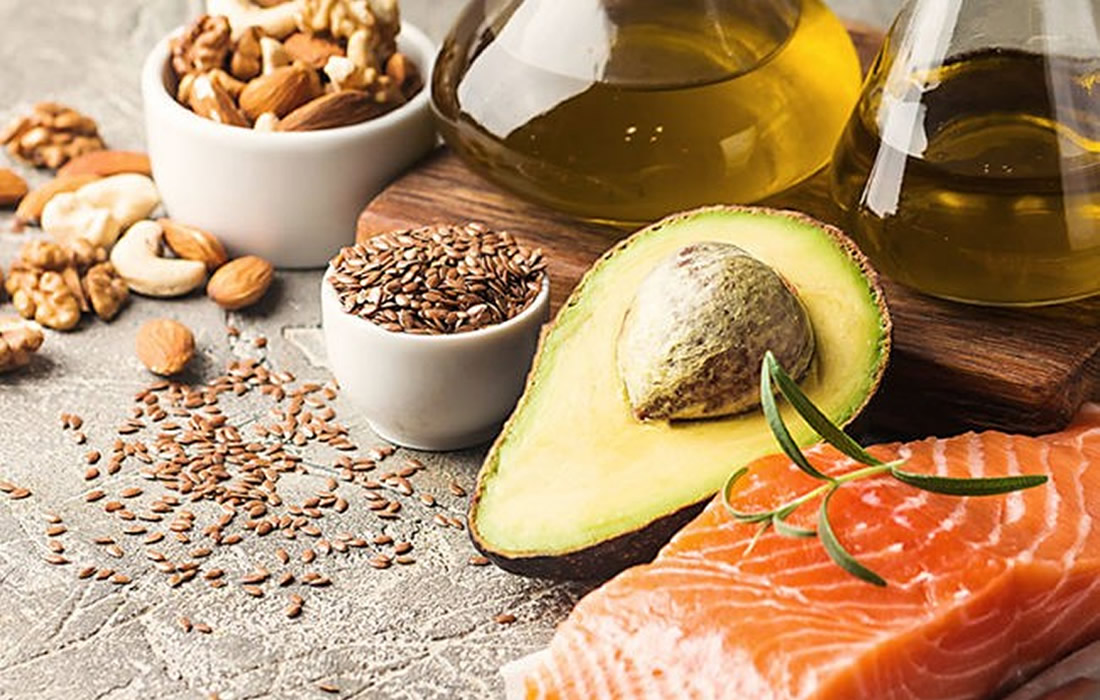Nutrition and Supplements
Dietary Omega 3 Fatty Acids for Migraine
Migraine is one of the most common neurological diseases and affects one billion people globally. The past several years have seen the introduction of several new acute and preventive treatments for migraine, but patient and clinician interest in non-pharmacological treatments, including dietary changes, remains strong.
Many people with migraine are highly motivated and interested in dietary changes, and clinicians might want to provide patients with information about the diets described in the study by Ramsden and colleagues. These authors manipulated dietary oils, butters and proteins (such as fish) to achieve the required fatty acid composition. Their results take us one step closer to a goal long sought by headache patients and those who care for them: a migraine diet backed up by robust clinical trial results.
Although the idea that diet contributes to migraine is nearly ubiquitous, few studies have shown the effectiveness of dietary interventions for migraine. A recent systematic review of the relationship between diet and migraine found the most robust evidence for individualized diets eliminating foods associated with high immunoglobulin G reactivity in each participant, but this level of individualization is difficult to achieve in clinical practice. The linked study by Ramsden and colleagues (doi:10.1136/bmj.n1448) now provides good evidence that a diet rich in omega 3 (n-3) fatty acids reduces headache frequency compared with a diet with normal intake of omega 3 and omega 6 (n-6) fatty acids.
Omega 3 and omega 6 fatty acids are precursors to oxylipins, which are involved in the regulation of pain and inflammation. Omega 3 fatty acid derivatives are associated with antinociceptive and anti-inflammatory effects, while oxylipins derived from omega 6 fatty acids worsen pain and provoke migraine in experimental models. Previous studies evaluating omega 3 fatty acid supplementation for migraine have been inconclusive.
Ramsden and colleagues hypothesized that diets with higher omega 3 fatty acids would increase serum 17-hydroxy docosahexaenoic acid (17-HDHA), an antinociceptive derivative, and reduce headache related disability as measured by the six item headache impact test (HIT-6). In this randomized controlled trial, 182 participants were assigned to one of three diets. The control diet included typical levels of omega 3 and omega 6 fatty acids. Both interventional diets raised omega 3 fatty acid intake. One kept omega 6 linoleic acid intake the same as the control diet and the other concurrently lowered linoleic acid intake.
Both interventional diets increased 17-HDHA levels compared with the control diet but HIT-6 scores were not statistically significantly different from the control group. Headache frequency was statistically significantly decreased in both intervention groups. The high omega 3 diet was associated with a reduction of two headache days per month and the high omega 3 plus low omega 6 diet group saw a reduction of four headache days per month. Participants in the intervention groups also reported shorter and less severe headaches compared with those in the control group.
Although this is statistically a negative study with regard to the primary clinical endpoint, there are several factors that make the overall findings clinically meaningful. International Headache Society guidelines and regulatory standards specify the use of headache or migraine frequency as the preferred outcome measure for trials of preventive interventions for migraine. Interpretation of this study’s findings is therefore complex: the study was negative according to the prespecified primary outcome, but would have been positive if judged by more guideline adherent endpoints. Also worth noting, the intervention groups experienced a clinically meaningful reduction in HIT-6 scores compared with baseline scores and compared with the control group (high omega 3: −1.5 v control; high omega 3 plus low omega 6: −1.6 v control).
Ramsden and colleagues’ results are also notable for the magnitude of the response to intervention. Clinical trials of recently approved pharmacological treatments for migraine prevention, such as monoclonal antibodies to the calcitonin gene related peptide, reported reductions of approximately 2–2.5 headache days per month in the intervention group compared with placebo. The new trial suggests that a dietary intervention can be comparable or better. Dietary interventions combined with pharmacological treatments might have an additive benefit.
These robust findings are even more remarkable because roughly two thirds of the study population met the criteria for chronic migraine (>15 headache days per month) and a little over half met the criteria for drug overuse headache, populations which are typically more refractory to treatment. Finally, it is reassuring that the intervention diets increased 17-HDHA as expected, which supports the concept that there is a biological underpinning to the study findings.
These results support recommending a high omega 3 diet to patients in clinical practice. The major barrier to widespread success of any dietary intervention is adherence because strict diets require time, financial investment and change in habits. Therefore, it will be crucial for future research to determine how easy or difficult it is for patients to implement diets rich in omega 3 fatty acids at home with or without lowering intake of omega 6. A clear template developed by nutritionists and patients would also be valuable to help people with migraine sustain these diets over longer time periods.
Many people with migraine are highly motivated and interested in dietary changes, and clinicians might want to provide patients with information about the diets described in the study by Ramsden and colleagues. These authors manipulated dietary oils, butters, and proteins (such as fish) to achieve the required fatty acid composition. Their results take us one step closer to a goal long sought by headache patients and those who care for them: a migraine diet backed up by robust clinical trial results.
Source:
https://www.bmj.com/content/374/bmj.n1535

